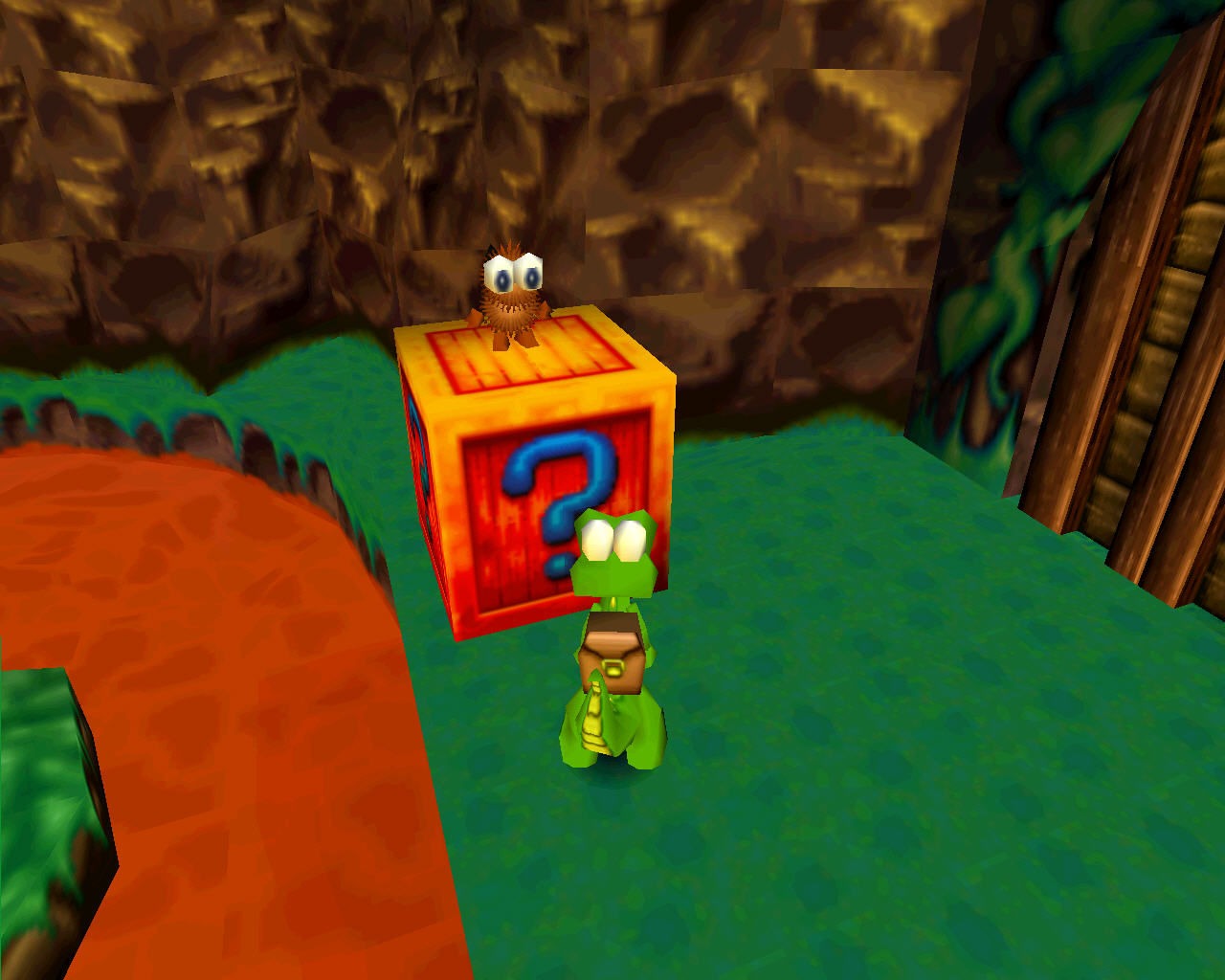A ‘Croc: Legend of the Gobbos’ retrospective
I recently wrote a look at the development of the PlayStation game Croc and how its franchise developed. This look into the past was inspired by me digging out the PlayStation over summer and revisiting the first game. I had it as a kid, but outside of remembering the adorable main character, I barely had a single memory of Croc, good or bad, and that’s a worrying sign. So, just under 25 years after it was released, does Croc hold up?
The game is a 3D platformer, released in 1997 at the period when 3D platformers were still young and being refined in the wake of the game-changing Super Mario 64. You play as the titular Croc, who sets off on an adventure in Gobbo Valley to rescue the cute Gobbos, furry creatures with big eyes who’ve been kidnapped by the evil Baron Dante. In practice, this translates to the player traversing a selection of stages with some objectives in mind – striking the end-of-level gong, rescuing the six Gobbos in each level, gathering a selection of collectibles (such as grey crystal orbs and hearts), and sometimes fighting bosses.
Croc has a selection of abilities, much like your customary platform hero – he can run, climb, swim, jump using the analogue stick, and he has both a tail-swipe and a cannonball-esque move for attacks. However, Croc is an absolute pain to control, meaning most of these moves are not quite the assets they initially appear to be. His movement is too fiddly and unresponsive, and as the platforming becomes more precise, Croc is nigh-on impossible to play. The little crocodile has the ability to automatically grab onto platforms if you’re just close enough, but that’s of little use when things get nasty, and his attacks are very indecisive as to whether they actually hit.
It was never quite good enough to catch in the memory
You could just about live with this if the levels were good, but they just fall short and make the whole experience frustrating to play. Croc uses the gem collectibles as lives, in a manner akin to Sonic’s rings – if you take damage, you lose a few, and you’re sent back to the level’s start when you’re fully out. But the platforming issues mean you’re frequently running low, and gems are often out of the way as the game progresses – you’d probably lose gems trying to collect them, so why bother? There is a reason – there’s a bonus room if you find all five, through which you can find the sixth Gobbo and ultimately unlock both more levels and a true ending – but it’s a frustrating endeavour, and you don’t have to do it. If you don’t, it’s a short game – if you do, it’s a miserable experience.
There are things to enjoy about Croc, not least how wholesome and cute the whole game is. Croc is a sweet presence, adorable in all the cutscenes with a design incorporating big eyes and a single tooth. And the worlds, much though they’re frustrating to play, boast a level of graphical ability unexpected for a 1997 PS1 game. The game looks good, and it makes you want to see the world – a world that, unusually, is open – but without the console’s famous fog. It also features a cracking score, with fun bouncy music that I’d listen to outside of the game, and full voice acting. The game is like a cartoon, and it’s very understandable that publishers Fox wanted to make an animated series from it (a series that was canned when the game and its sequel were panned).
I don’t want to be too mean to Croc – although critics dismissed it as derivative, it was being developed by a small studio at a time before this style of game was the norm. It shows a lot of potential in the platforming, and as it’s stylistically so charming, it’s a game I wanted to explore even though the mechanics make that task less enjoyable. As I suggested in my Concept to Console piece, Croc was just unfortunate – it came out as mascot platformers were leaving the stage, and it was never quite good enough to catch in the memory.

Comments